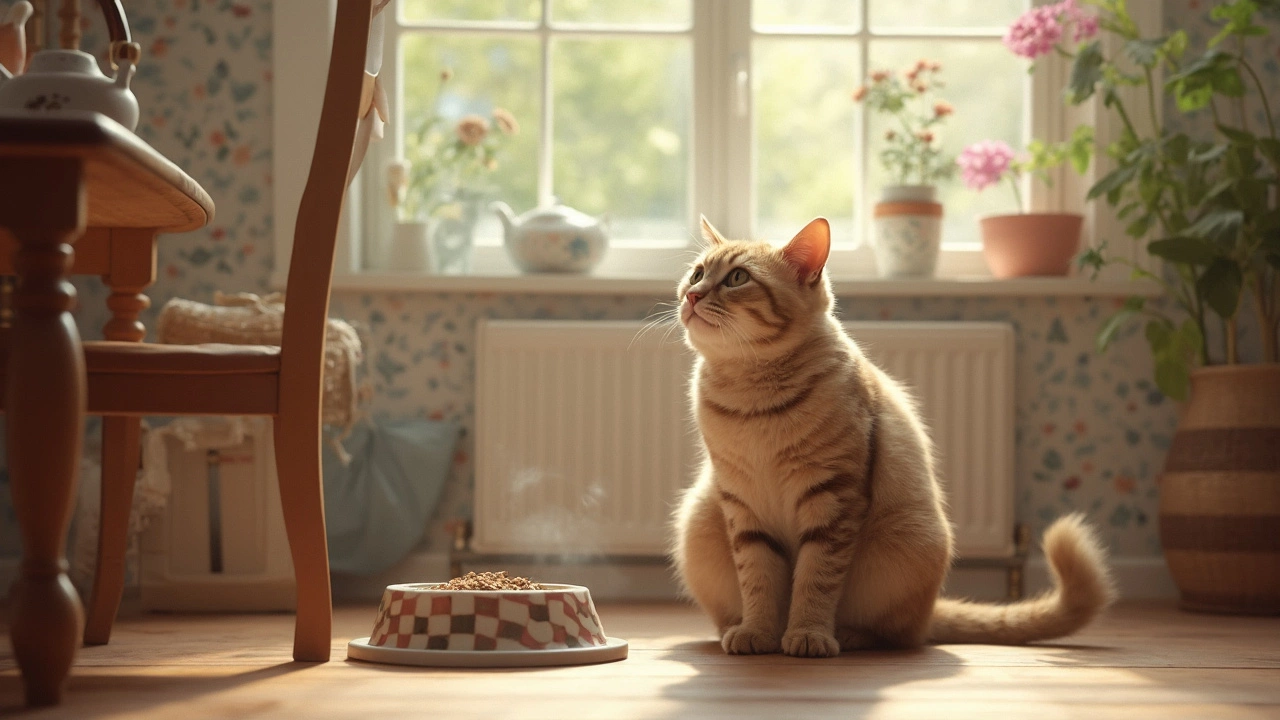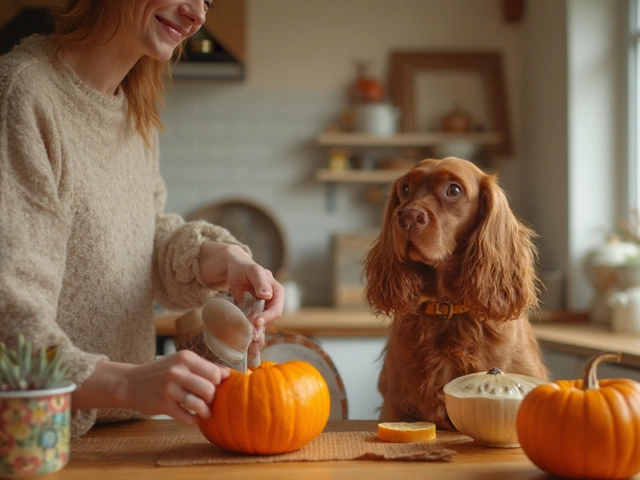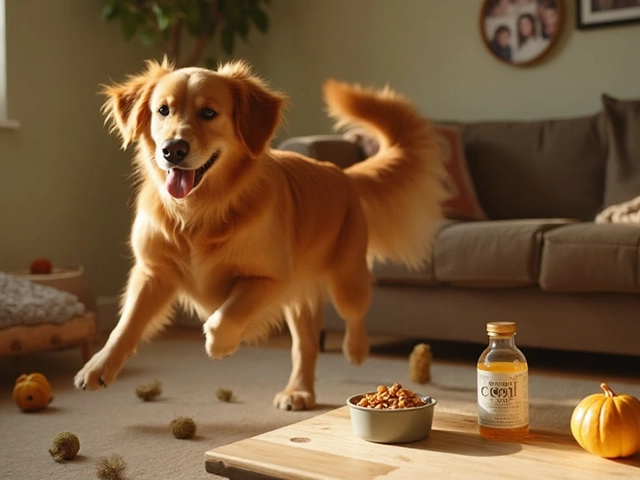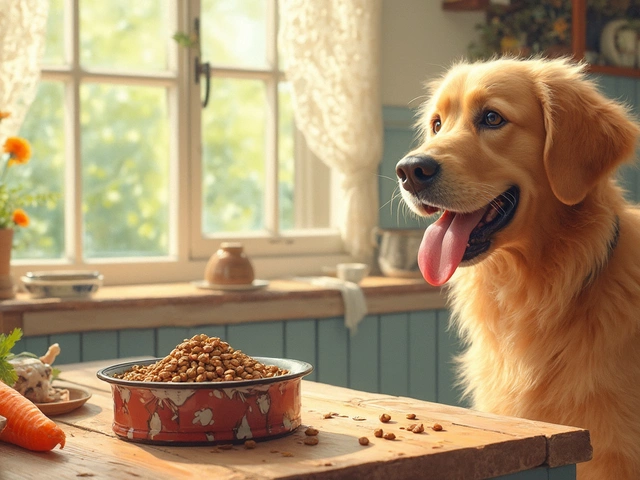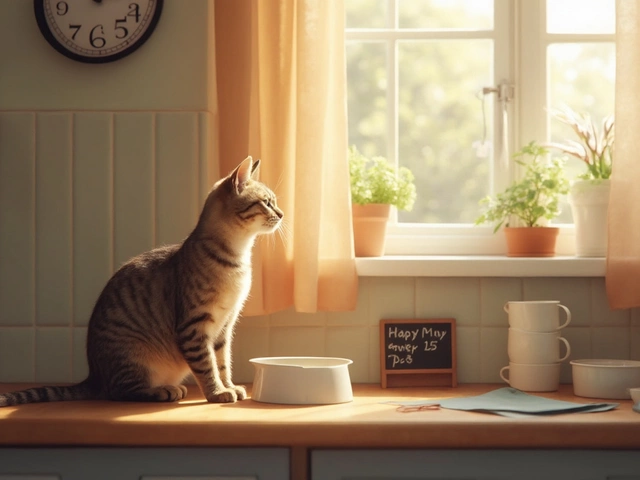Feeding your cat can sometimes feel like an art form—when to do it, how much to give, and whether you're meeting their nutritional needs. Here's a straightforward dive into how many times a day you should feed your feline buddy.
First off, let's address their basic needs. Cats, like us, appreciate a meal schedule. Adults typically thrive on two main meals a day, matching our breakfast and dinner routine. This aligns their tummy with their circadian rhythm and can prevent those 3 am hunger cries. But kittens? They burn through calories like wildfire, needing 3-4 smaller meals daily to keep up with their fast growth and boundless energy.
A few key factors come into play when deciding your cat's meal frequency. Age, activity level, and overall health should guide your approach. A senior, couch-potato cat might need less frequent feeds compared to a rambunctious kitten.
- Understanding Your Cat's Needs
- Factors Affecting Feeding Frequency
- Age-Specific Feeding Guidelines
- Portion Control Tips
- Common Feeding Mistakes
- The Role of a Consistent Routine
Understanding Your Cat's Needs
Alright, let's get into what really makes your cat tick when it comes to feeding. Understanding your cat's unique needs is the backbone of setting a proper feeding schedule.
Cats are obligate carnivores, meaning their diet mostly revolves around meat. This dietary preference means they need a lot more protein compared to dogs or us humans. So, whether you opt for wet or dry cat food, make sure it lists meat as a primary ingredient. Trust me, your cat's health will thank you.
Beyond the meat, it's crucial to look at the types of nutrients packed in their food. Taurine, an essential amino acid for cats, should always be in there. A lack of taurine can lead to serious health issues down the line. Vitamins, minerals, and fatty acids are also key players in keeping your cat spry and full of life.
Why Portion Size Matters
It might be tempting to fill up their bowl and let them graze, but cats can be prone to overeating. This is where portion control really matters. An adult cat typically needs around 24 to 35 calories per pound each day to maintain a healthy weight. Obviously, this might change based on their activity level or if they're indoors more.
If you're unsure how much to feed them, starting with the guidelines on the cat food packaging is a good bet. Still, it's always wise to tweak it based on their hunger cues and activity levels.
Water: Don't Forget It!
Last but definitely not least, water is a crucial part of your cat's diet. Cats aren't always the best drinkers, especially if they're not getting enough fluids from their food. Ensuring they have a fresh supply of water can help prevent urinary tract issues, which some cats are particularly susceptible to.
A fun fact: A cat's ability to naturally concentrate its urine is unique. However, this is even more a reason to keep their water intake in check to avoid kidney issues down the road.
| Nutrient | Importance |
|---|---|
| Protein | Muscle development and energy |
| Taurine | Essential for heart and vision |
| Fatty Acids | Maintain healthy skin and fur |
Feeding isn't just about filling the bowl. It's about understanding their nutritional needs to ensure they're living their best nine lives.
Factors Affecting Feeding Frequency
How often you need to feed your cat depends on a host of factors that might change as they grow or adjust to their environment. Let’s break it down to make sure your cat's diet is as optimal as possible.
Age
Age plays the biggest role here. Kittens are growing and buzzing with energy, so they need more frequent meals compared to adult cats. In contrast, senior cats might munch less often due to lower energy levels and reduced metabolism.
Activity Level
If your cat is a live wire, always leaping around, they'll need a calorie intake that matches their energy use. A more sedate cat lounging by the widow might do just fine with less frequent feeds. It's all about balancing energy in with energy out.
Health Conditions
Like humans, health stuff can shake things up for cats. Diabetes, hyperthyroidism, or kidney issues might call for specialized feeding schedules. Always work with your vet to tailor the frequency and type of food you're offering.
Reproductive Status
Pregnant or lactating cats need extra fuel. They’re essentially eating for multiple little ones. Keep meal frequency high to support their changing needs.
| Factor | Influence on Feeding |
|---|---|
| Kitten | 3-4 meals daily |
| Adult Cat | 2 meals daily |
| Senior Cat | 1-2 meals depending on health |
Pay attention to these factors, and don’t be afraid to tweak things. Keeping an eye on your cat's feeding routine can make a big difference in their overall well-being.
Age-Specific Feeding Guidelines
Feeding your cat according to their age is like adjusting your exercise routine as you get older—it just makes sense. Different life stages mean different nutritional needs and feeding frequencies. Let's break it down.
Kitten Feeding
Up to six months, kittens are little energy bundles that eat frequently. During these growth spurts, they benefit from having about three to four meals a day. This helps them get the intense energy they need to support their rapid body changes. Kitten food typically has more calories and nutrients packed in than adult cat food.
Adult Cats
Once your feline reaches the adult stage at around one year, you can switch their schedule to about two meals a day. Adult cats need balanced meals that control their caloric intake to maintain their energy levels and weight. Think of it like how humans eat breakfast and dinner—enough to keep them satisfied and healthy without overdoing it.
Senior Cats
Senior cats, usually aged seven and up, tend to be less active and might need fewer calories but more frequent meals to avoid digestive issues. Some senior cats do better with multiple smaller meals throughout the day, preserving their energy without overwhelming their stomachs.
| Age Group | Meals Per Day | Nutritional Focus |
|---|---|---|
| Kittens (up to 6 months) | 3-4 meals | High energy, nutrient-rich |
| Adult Cats (1-7 years) | 2 meals | Balanced diet, calorie control |
| Senior Cats (7+ years) | 2-3 smaller meals | Low calorie, easy digestibility |
These age-specific guidelines are a starting point but always keep an eye on your cat’s weight and energy levels. If you're ever in doubt, a quick chat with your vet can put you in the right direction.
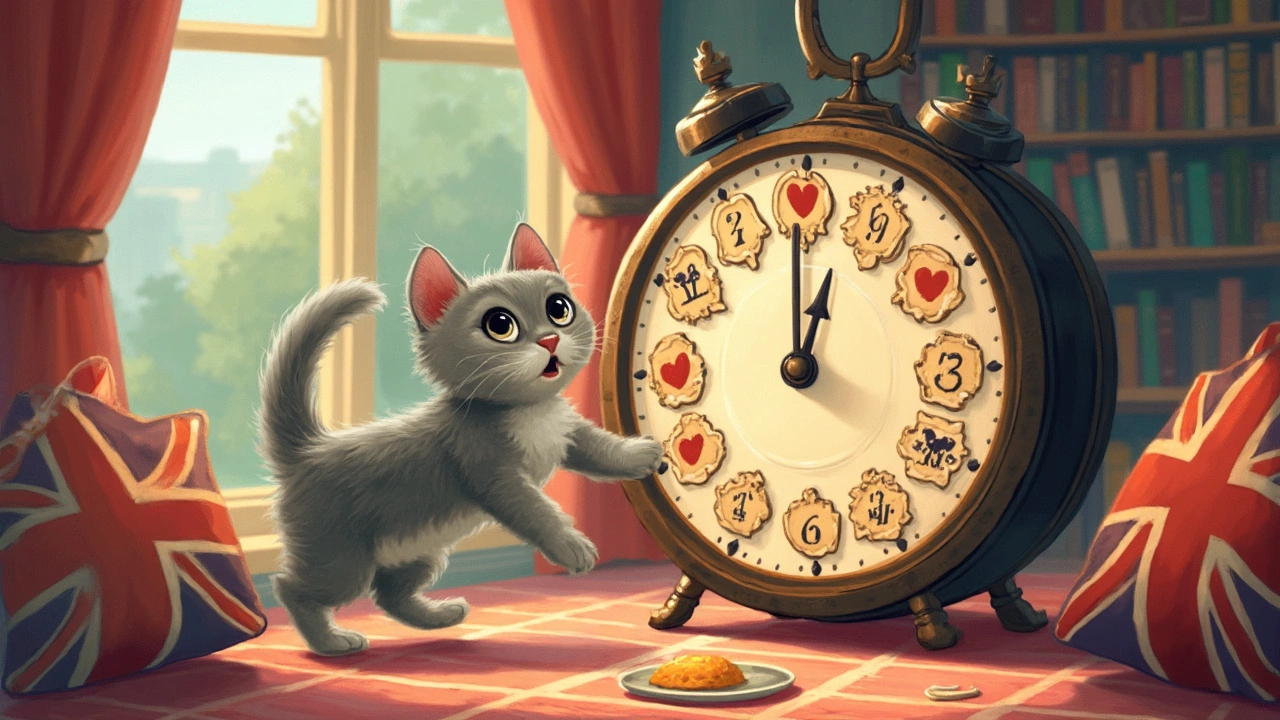
Portion Control Tips
Getting portion control right is key to maintaining your cat's healthy diet and body weight. Overfeeding can lead to obesity, a common issue among domesticated cats that'll leave them sluggish and may lead to health complications down the road.
Start by reading the label on your cat food. Most provide a pretty good guideline based on your cat's weight. If you're unsure about what your cat should weigh, a quick chat with your vet can clear that up. They'll likely show you a chart that plots a healthy weight range for your cat's breed and age.
Using a Measuring Cup
Always measure your cat's food. Using a measuring cup ensures you aren't just pouring 'til it looks about right. It's easy to be a bit generous and not realize it. Remember, even an extra spoon can add up over time.
Adjusting for Treats
If you're one to give your cat treats (who can resist those eyes?), make sure to account for those calories in their daily food intake. Treats should only make up about 10% of their daily calories, so don't let them go overboard.
Monitor Changes in Weight and Activity
Keep an eye on your cat's weight and activity levels. If you notice they're becoming a little too chunky, adjust portions gradually. Cut back a tiny bit every day instead of a drastic drop. On the flip side, if your cat seems more active, you might have to offer a bit more for the energy boost.
- Stick to regular feeding times – Cats love routine, and it helps with digestion.
- Use a feeding chart – Many brands offer handy charts that factor in activity and age.
- Indoor vs. outdoor cats – Indoor cats usually need less, as they expend less energy.
Keeping track of your cat's nutrition and making these little tweaks can lead to a healthier, happier pet. Remember, every cat is unique, so what works for one might not suit another.
Common Feeding Mistakes
Even with the best intentions, cat owners make feeding blunders that can affect their cat's health. Here are some slip-ups you might be making with your cat feeding routine.
Overfeeding To Win Their Love
We get it—those cute, pleading eyes can melt any heart. But giving in to every meow and feeding extra can lead to obesity and related health issues like diabetes. An estimated 60% of cats in the UK are overweight, which shortens their lifespan and diminishes quality of life.
Skipping Water
Many cat owners focus solely on cat food and forget that water is just as critical. Cats aren't big water drinkers by nature, but they need it to prevent urinary issues and dehydration. Make sure fresh water is always available, and consider a cat water fountain if your feline is finicky.
Ignoring Age and Activity
Feeding your elderly cat the same amount as a lively young one is a recipe for trouble. Adjust your cat's diet according to their life stage and energy expenditure. A senior cat lounging most of the day needs fewer calories than a kitten constantly on the go.
Leaving Food Out All Day
While free-feeding might seem convenient, it encourages overeating and makes it hard to monitor your cat's intake. Try sticking to regular meal times, allowing better portion control and a clear set of cat diet boundaries.
Ignoring the Vet's Advice
Lastly, don't underestimate the importance of tailoring your cat's pet nutrition plan with the vet. They can offer insights into specific dietary needs, detect health issues early, and keep your feeding habits on the right track.
The Role of a Consistent Routine
Establishing a solid feeding routine for your cat isn't just about filling their bowl. It plays a crucial role in their overall well-being and ensures they get the right nutrients at the right time. A consistent routine can greatly reduce anxiety and behavioral issues in cats.
Cats are creatures of habit; they love to know what's coming next. When you stick to a feeding schedule, your cat will expect food at certain times, helping them feel secure. This expectation can drastically reduce stress, leading to a happier pet and fewer mishaps around the house.
Consistency aids in monitoring their health, too. You'll notice if they suddenly stop eating or start leaving food because you'll know their usual patterns. These changes can be early signs of health issues, and spotting them gives you the chance to act fast.
| Feeding Frequency | Recommended Routine |
|---|---|
| 2 meals/day | Early morning and evening |
| 3 meals/day | Morning, midday, evening |
For those who struggle with a proper feeding schedule due to hectic times, consider automatic feeders. They take the guesswork out and keep your feeding times precise and reliable.
Also, remember the cat feeding routine should accommodate any dietary needs your vet points out. If your cat requires special cat food, ensure it's given consistently to manage their health condition or dietary restrictions optimally.
Incorporate playtime before meals. This mimics their natural hunting, eating, and resting cycle, making feeding time more satisfying for your cat. It also helps manage weight, as a bit of exercise before eating goes a long way!

